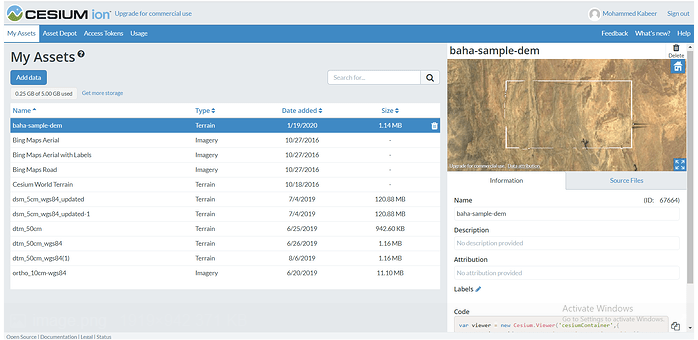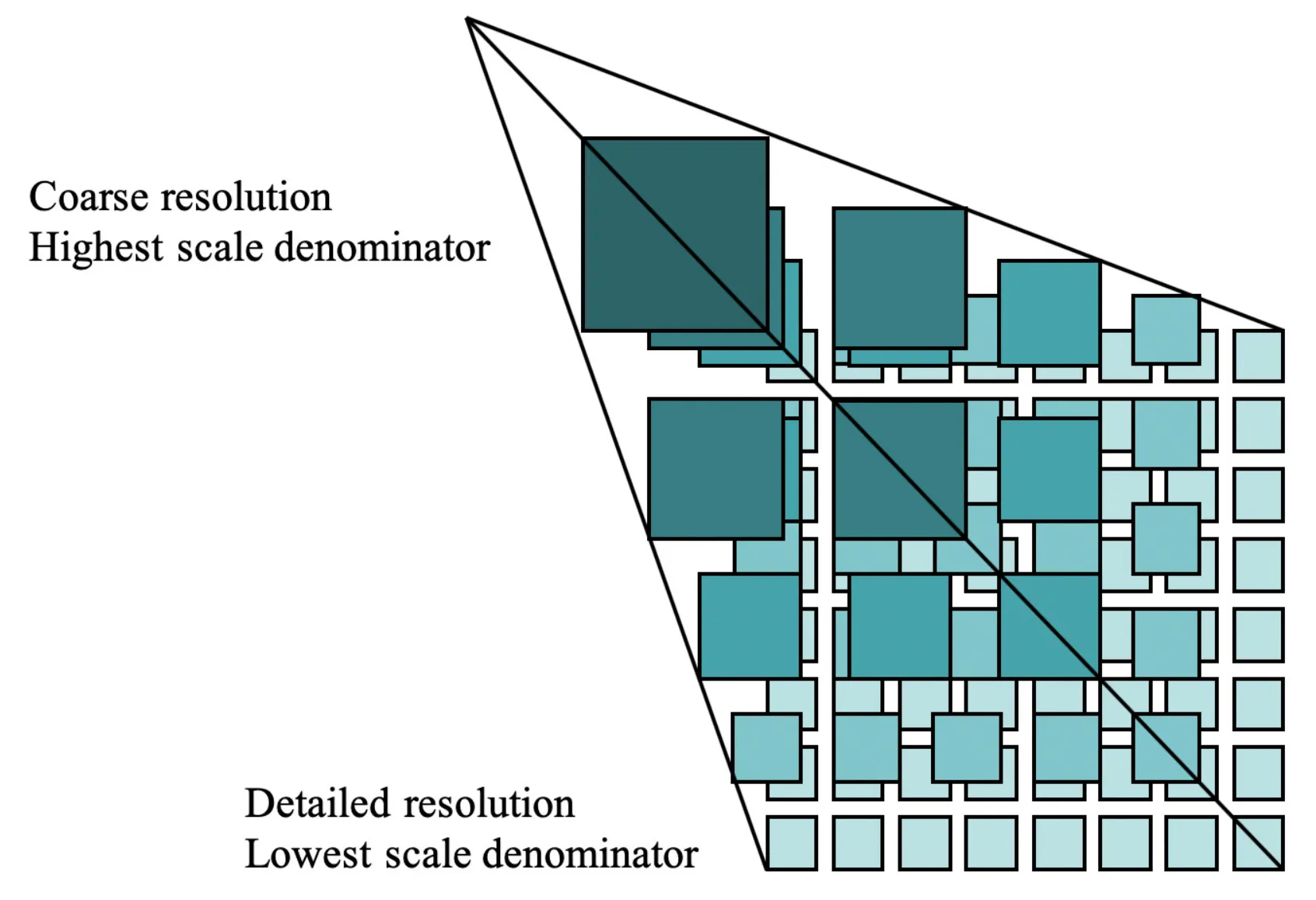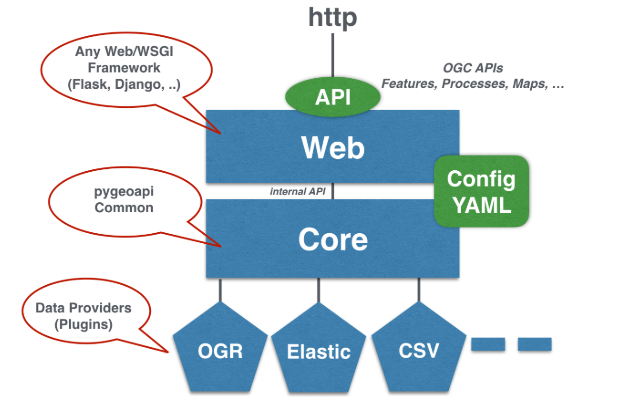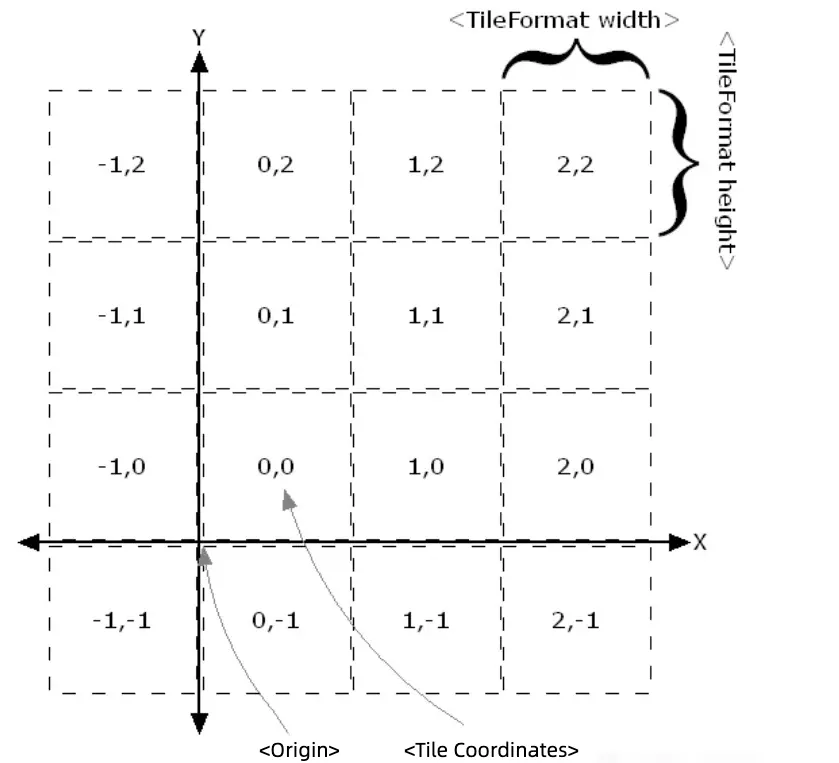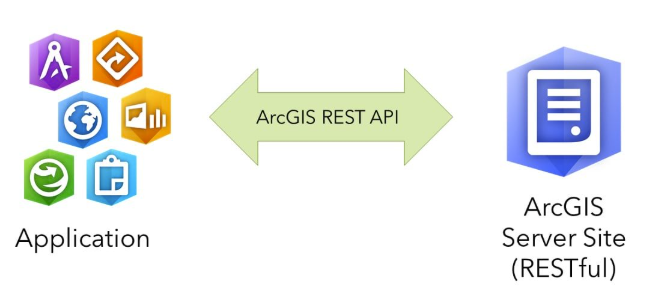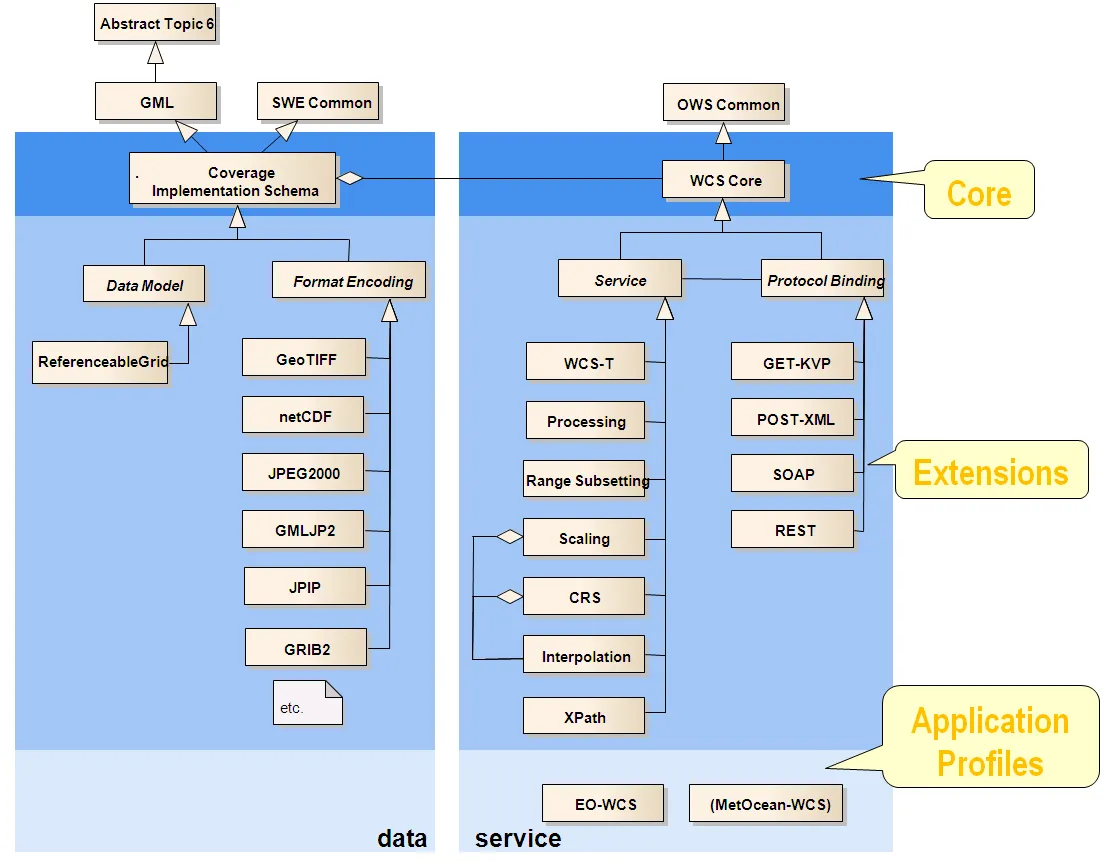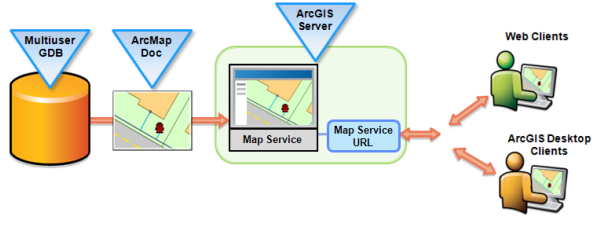Cesium Terrain Service
Cesium Terrain Service is a server designed for Cesium.js. It is used to easily provide file system-based terrain tilesets. It supports working with CesiumTerrainProvider class of Cesium.js to render high-precision terrain data in the browser. It uses binary file structure to store terrain data. Based on Quantized Mesh technology, it reduces data storage space through compression and quantization processing, and improves loading and rendering performance. The service supports on-demand data loading, dynamically loads terrain slices of different resolutions according to user views, adapts to different levels of view requirements, and ensures efficient terrain loading.
2025-09-16 14:47:17OGC API - Tiles
OGC API - Tiles (formerly known as WMTS 2.0) is a new generation of geospatial data distribution API specification developed by the Open Geospatial Consortium (OGC). It is designed to replace the traditional WMTS (Web Map Tile Service) 1.0, adopts a RESTful API architecture, and supports modern Web technologies. The specification provides a standardized method to efficiently provide map tiles, image tiles, and 3D tiles (such as 3D Tiles format) to clients based on HTTP. It is worth mentioning that it has an extensible structure and is widely used in smart cities, urban modeling, geospatial analysis platforms and other fields.
2025-09-16 14:47:14NASA Earthdata API
NASA Earthdata API is a programmable interface provided by the National Aeronautics and Space Administration (NASA) that enables users to access earth observation data. Through this API, users can obtain remote sensing data collected by various satellites and sensors such as MODIS, Landsat, Sentinel, SMAP, ASTER, etc., covering many fields such as climate change, atmosphere, water cycle, land use, etc. The API is deeply integrated with Earthdata Search, DAAC (Distributed Active Archive Center) and other systems, enabling researchers, developers, government agencies and educational institutions to efficiently obtain and analyze data according to their own needs. By using this API, users can search, filter and download data directly in web applications or scripts, greatly improving scientific research efficiency and development flexibility.
2025-09-16 14:47:18OGC API - Maps
OGC API - Maps is a new generation of Web map service standards launched by the Open Geospatial Consortium (OGC). It is based on the RESTful architecture and OpenAPI specification. It aims to replace the traditional WMS (Web Map Service) protocol, provide more efficient and flexible map tiles and dynamic map rendering services, and support multi-format output (such as PNG, JPEG, GeoTIFF) and spatial data interaction.
2025-09-16 14:47:13OpenTopography API
OpenTopography API is a RESTful web service interface for developers, through which developers can access global DEM (digital elevation model) datasets hosted by OpenTopography, such as Copernicus GL30, NASA DEM, SRTM, etc. The API is documented using the OpenAPI specification and can be visualized and tested through Swagger. Users need to register through the OpenTopography portal and obtain an API key to authenticate when accessing the API.
2025-09-16 14:47:17Tile Map Service (TMS)
Tile Map Service (TMS) is a network-based geographic information service protocol for efficiently loading and displaying map data. The core idea of TMS is to pre-cut map data into small tiles of fixed size (usually 256×256 pixels), and store and access them in a hierarchical (zoom level) and spatial index manner. The client dynamically requests the corresponding tiles according to the user’s view requirements, thereby achieving fast loading and smooth display. TMS usually organizes map data in the form of tile pyramids, which are gradually refined from the global view (low zoom level) to the local details (high zoom level), and the resolution of each level increases, so as to meet the multi-scale display requirements.
2025-09-16 14:47:13ArcGIS REST API
ArcGIS REST API is a set of interfaces designed based on the REST architectural style for accessing and using the geospatial services published by ArcGIS Server. It allows users to obtain and operate various GIS resources on the server, such as map services, feature services, geometry services, etc., through URLs. Since ArcGIS Server 9.3, ArcGIS REST API has been providing services through which clients can access GIS services published on the server. For example, users can obtain the GIS service directory through a specific URL, or perform operations such as map output and query.
2025-09-16 14:47:15HERE Maps API
HERE Maps API is a set of map and location service APIs provided by HERE Technologies, a company headquartered in Germany. It is widely used in web applications, mobile apps and enterprise systems, and is mainly used to implement map display, route navigation, location search, geocoding, traffic information and other functions. With high-precision map data and real-time traffic information, it has been widely used in the automotive industry, logistics, smart city development and other fields.
2025-09-16 14:47:16Web Coverage Service (WCS)
**Web Coverage Service (WCS) **is a geographic information service protocol based on the Open Geospatial Consortium (OGC) standard. It is designed to provide raster data (Coverage Data), allowing users to access and obtain geospatial coverage data through the Internet. Coverage data contains physical quantities or phenomena related to space, such as temperature, rainfall, altitude, etc. These data are usually stored in the form of regular grids or irregular grids, and are widely used in environmental monitoring, meteorological analysis, remote sensing data sharing and other fields.
2025-09-16 14:47:12Web Map Service (WMS)
Web Map Service (WMS) is a standard protocol defined by the Open Geospatial Consortium (OGC) for requesting and displaying geospatial map images over the Internet. These images are generated from geographic data and are usually displayed in raster formats (such as PNG, JPEG). The core function of WMS is to provide users with visualization of geographic data through standardized HTTP requests without directly delivering the data itself.
2025-09-16 14:47:11
 Service
Service

